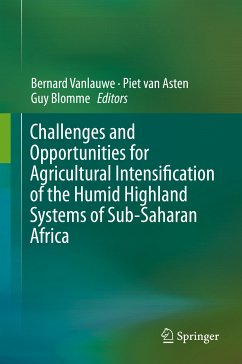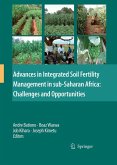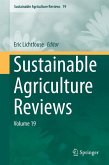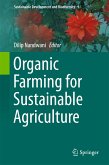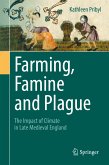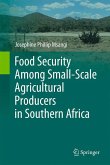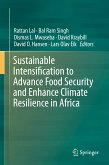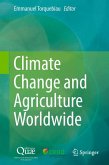Challenges and Opportunities for Agricultural Intensification of the Humid Highland Systems of Sub-Saharan Africa (eBook, PDF)
Redaktion: Vanlauwe, Bernard; Blomme, Guy; Asten, Piet van


Alle Infos zum eBook verschenken

Challenges and Opportunities for Agricultural Intensification of the Humid Highland Systems of Sub-Saharan Africa (eBook, PDF)
Redaktion: Vanlauwe, Bernard; Blomme, Guy; Asten, Piet van
- Format: PDF
- Merkliste
- Auf die Merkliste
- Bewerten Bewerten
- Teilen
- Produkt teilen
- Produkterinnerung
- Produkterinnerung

Hier können Sie sich einloggen

Bitte loggen Sie sich zunächst in Ihr Kundenkonto ein oder registrieren Sie sich bei bücher.de, um das eBook-Abo tolino select nutzen zu können.
The humid highlands in sub-Saharan Africa (SSA) are characterized by high population densities and require intensification. The Consortium for Improving Agriculture-based Livelihoods in Central Africa (CIALCA) has set up a research for development platform in various mandate areas in DR Congo, Burundi, and Rwanda, aiming to identify improved production, market, and nutrition options and facilitating the access for development partners to these options. This platform is supported by capacity building, multi-stakeholder dialogue, and monitoring and evaluation efforts. The conference, facilitated…mehr
- Geräte: PC
- ohne Kopierschutz
- eBook Hilfe
- Größe: 6.34MB
![Advances in Integrated Soil Fertility Management in sub-Saharan Africa: Challenges and Opportunities (eBook, PDF) Advances in Integrated Soil Fertility Management in sub-Saharan Africa: Challenges and Opportunities (eBook, PDF)]() Advances in Integrated Soil Fertility Management in sub-Saharan Africa: Challenges and Opportunities (eBook, PDF)233,95 €
Advances in Integrated Soil Fertility Management in sub-Saharan Africa: Challenges and Opportunities (eBook, PDF)233,95 €![Sustainable Agriculture Reviews (eBook, PDF) Sustainable Agriculture Reviews (eBook, PDF)]() Sustainable Agriculture Reviews (eBook, PDF)129,95 €
Sustainable Agriculture Reviews (eBook, PDF)129,95 €![Organic Farming for Sustainable Agriculture (eBook, PDF) Organic Farming for Sustainable Agriculture (eBook, PDF)]() Organic Farming for Sustainable Agriculture (eBook, PDF)137,95 €
Organic Farming for Sustainable Agriculture (eBook, PDF)137,95 €![Farming, Famine and Plague (eBook, PDF) Farming, Famine and Plague (eBook, PDF)]() Kathleen PribylFarming, Famine and Plague (eBook, PDF)89,95 €
Kathleen PribylFarming, Famine and Plague (eBook, PDF)89,95 €![Food Security Among Small-Scale Agricultural Producers in Southern Africa (eBook, PDF) Food Security Among Small-Scale Agricultural Producers in Southern Africa (eBook, PDF)]() Josephine Phillip MsangiFood Security Among Small-Scale Agricultural Producers in Southern Africa (eBook, PDF)113,95 €
Josephine Phillip MsangiFood Security Among Small-Scale Agricultural Producers in Southern Africa (eBook, PDF)113,95 €![Sustainable Intensification to Advance Food Security and Enhance Climate Resilience in Africa (eBook, PDF) Sustainable Intensification to Advance Food Security and Enhance Climate Resilience in Africa (eBook, PDF)]() Sustainable Intensification to Advance Food Security and Enhance Climate Resilience in Africa (eBook, PDF)81,95 €
Sustainable Intensification to Advance Food Security and Enhance Climate Resilience in Africa (eBook, PDF)81,95 €![Climate Change and Agriculture Worldwide (eBook, PDF) Climate Change and Agriculture Worldwide (eBook, PDF)]() Climate Change and Agriculture Worldwide (eBook, PDF)137,95 €
Climate Change and Agriculture Worldwide (eBook, PDF)137,95 €- -46%11
-
-
Dieser Download kann aus rechtlichen Gründen nur mit Rechnungsadresse in A, B, BG, CY, CZ, D, DK, EW, E, FIN, F, GR, HR, H, IRL, I, LT, L, LR, M, NL, PL, P, R, S, SLO, SK ausgeliefert werden.
- Produktdetails
- Verlag: Springer International Publishing
- Seitenzahl: 404
- Erscheinungstermin: 7. Oktober 2014
- Englisch
- ISBN-13: 9783319076621
- Artikelnr.: 43788713
- Verlag: Springer International Publishing
- Seitenzahl: 404
- Erscheinungstermin: 7. Oktober 2014
- Englisch
- ISBN-13: 9783319076621
- Artikelnr.: 43788713
- Herstellerkennzeichnung Die Herstellerinformationen sind derzeit nicht verfügbar.
